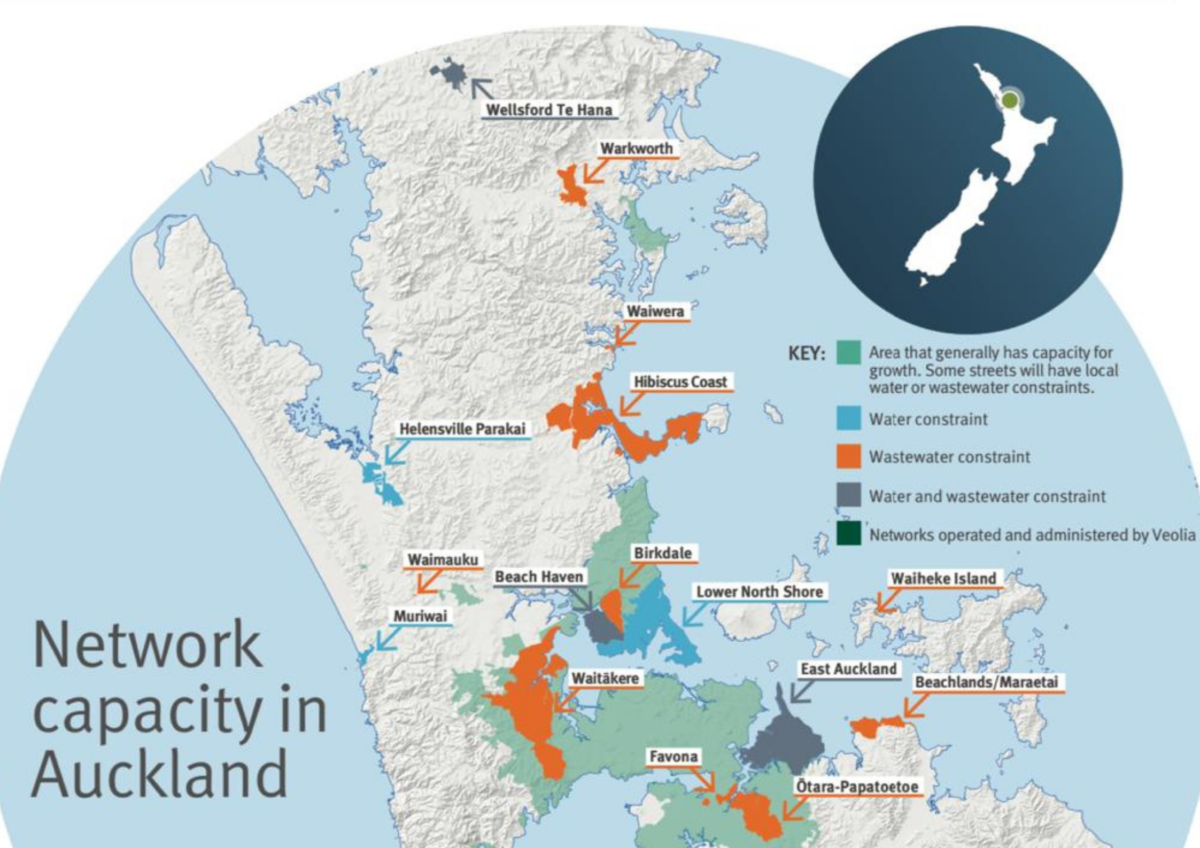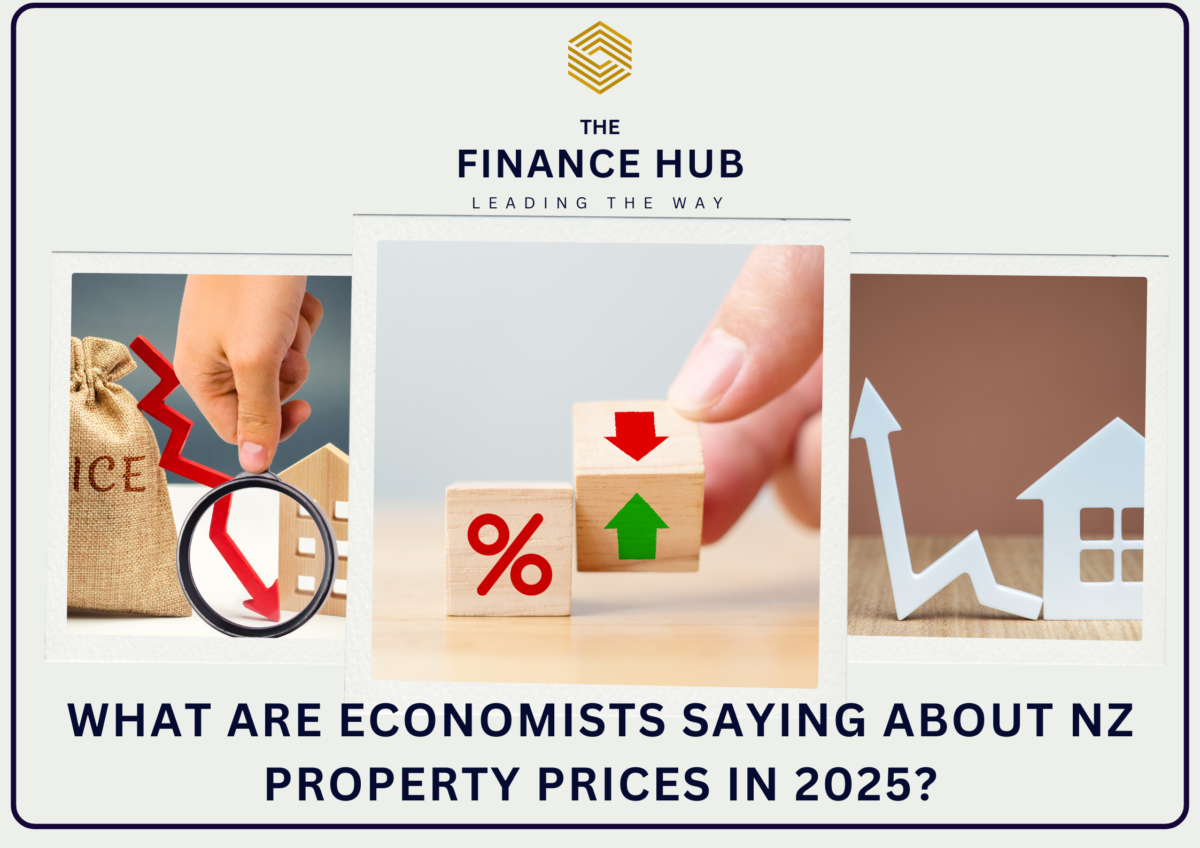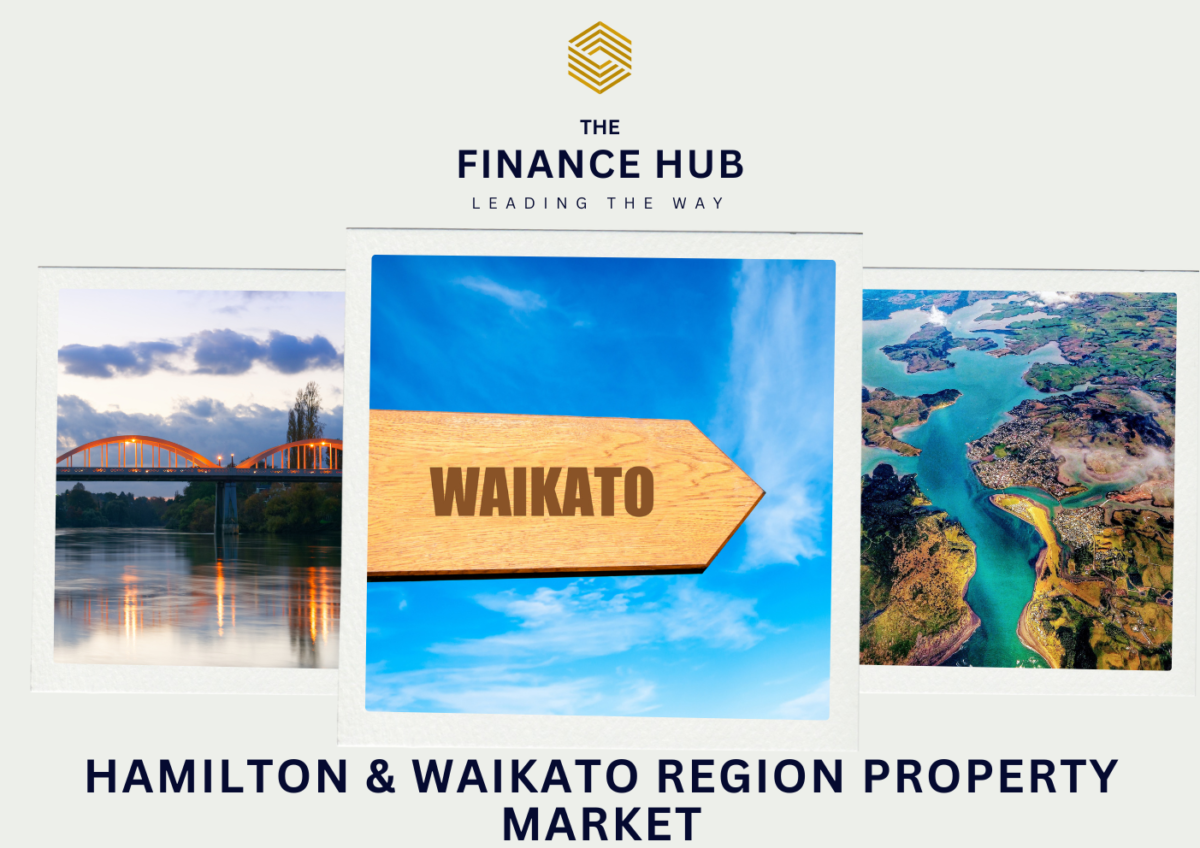Recently parts of Auckland have been red-zoned by Watercare, Council Controlled Organisation CCO, effectively blindsiding many developers who have already bought land ready to develop. The new constraints mean that new developments can’t be built since they can not be connected to the existing infrastructure until necessary upgrades have been carried out. In this article, we take a look at the reason behind this, which areas are affected and what you should do if you’ve been looking to develop in Auckland.

Why have these constraints been put in place?
Since Watercare took over Auckland’s water and wastewater services in 2010 the city and population have both expanded and this is set to continue – according to Auckland Council the population, which as of 2021 is 1.72 million, is predicted to reach 2,230,800 by 2053.
To plan for this growth, Watercare has said that certain areas of Auckland need new or upgraded infrastructure as pipes are outdated and they need to ensure they can supply sufficient freshwater for everyone.
Until these upgrades have been made to the infrastructure, there are areas in Auckland where development is going to be limited or stopped altogether.
Which areas of Auckland are affected?
Watercare has released an overview map detailing the areas that have been affected by water constraints, wastewater constraints and both water and wastewater constraints. For a more detailed look and to find out if your specific project is likely to be affected you can take a look at this interactive map.
At a glance these are some areas with the maximum constraints:
No capacity at the present due to both water and wastewater constraints:
No capacity long term due to water treatment plant capacity:
No capacity long term due to wastewater treatment plant capacity:
When are the updates set to be completed?
In Watercare’s update on the 14th November 2024, Chief strategy and planning officer Priyan Perera stated that:
“Our infrastructure programme aligns with Auckland Council’s Future Development Strategy and will see us investing $13.7b in water and wastewater infrastructure in the next decade, which includes $6.8 billion in projects to support housing growth.”
However, not all the work will be completed in the next decade. Whilst some areas like Clarks Beach, which currently has no capacity due to wastewater constraints, are set to have a solution by 2026, other areas like Lower North Shore are set to be waiting until 2040 at the earliest, and maybe even as late as 2045.
What should you do if you’re looking to develop in Auckland?
As with so much relating to property, we can’t stress enough the importance of doing your due diligence.
If you are looking to develop, your first steps should include speaking to your planning coordinator and a civil engineer and asking them to carry out a site-specific assessment which can identify any restraints before you apply for your resource consent or EPA (engineering plan approval). Watercare has said they can also offer a pre-project assessment.
If you’re looking to develop in one of the areas affected and already have your resource consent, it’s important to note that it is not guaranteed that your EPA will be accepted.
Watercare has said that anyone who is looking to develop in an area of constraint is to get in touch with them to see if their project is likely to be affected.
In areas where there is limited capacity, Watercare is assessing each application on a case by case basis so your project might still go ahead.
There are some alternative solutions that might mean your development could proceed including:
And what if you’re a buyer, who has a new build under contract?
Contact your developer, to see if they have building consent and if they have been given the green flag for the development.
What could a lack of development mean for Auckland and the rest of New Zealand?
If the demand to live in Auckland continues to be there (which is most likely), but there isn’t affordable housing to match then you can expect two things: rent and house prices will increase (which will benefit property investors), and areas outside of Auckland will become more attractive to developers.
Please note this information is just designed as a general overview. For detailed information relating to your specific project, get in touch with Watercare. For residential, commercial and business finance solutions get in touch with The Finance Hub.
 Auction
Christchurch
Empowers Women
Financial Literacy
Hamilton
House Purchase
Property Investment
Rental
Wellington
Auction
Christchurch
Empowers Women
Financial Literacy
Hamilton
House Purchase
Property Investment
Rental
Wellington
The Residential Tenancies Amendment Bill passed its third reading in Parliament at the end of last year and is now coming into force. But why…
 Uncategorized
Uncategorized
What will happen to property prices in 2025 according to the leading economists?
 Auction
Financial Literacy
First Home Buyer
Hamilton
House Purchase
Interest Rate
Loan Approval
Property Investment
Property Tax
Rental
Auction
Financial Literacy
First Home Buyer
Hamilton
House Purchase
Interest Rate
Loan Approval
Property Investment
Property Tax
Rental
The fourth largest region in New Zealand, the Waikato covers over 25,000 square kilometres and includes, arguably, some of the most beautiful areas in the…

Subscribe and get news and information about our webpage